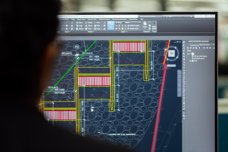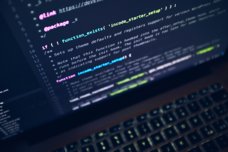Digital twins (DTs) can be used to manage a city’s infrastructures (e.g. roads, transportation and public services, smarter energy grids and water networks). They can also support city planners in making informed decisions, and provide up-to-date data for simulations and resource allocation.
However, city digital twins are highly complex models. Building and implementing DTs for entire cities requires mapping all existing buildings, objects, infrastructure and systems into a virtual representation. Possible input data sources include remote sensing, mobile platforms equipped with sensors, building information models (BIMs), and 3D city vector models based on standards such as CityGML.
In addition to static geometric data, most DTs also require dynamic (behaviour and sensor) data. What’s needed for a DT to provide up-to-date information on demand is a fusion of different, heterogeneous datasets, captured at different frequencies (e.g. annually, daily or up to every minute).
In short, for building a city digital twin, the following is needed:
- A dynamic/live representation of assets with past, current and future states
- Integration in virtual platforms of real-time data from sensors for continuous analysis through Internet of Things (IoT)
- Simulation and prediction capabilities based on real-world data
- Utilization of AI and data analytics for enhanced outcomes
- Support for informed decision-making and personalized solutions
Implementation challenges
Implementing a city DT involves challenges in different fields.
Massive amounts of data from different sources
Today’s urban landscape evolves rapidly. Understanding and dealing with the complex underlying dynamics of urban behaviour requires a multifaceted approach that encompasses spatial, temporal and semantic information. The modern quest for urban insight involves a huge amount of data and data sources, ranging from Lidar and aerial imagery to terrestrial and satellite data, as well as the continuous stream of information from IoT sensors. These sources, when combined, serve as the fundamental ingredients for DT creation.
Geodata infrastructure
A solid foundation is required in the form of geodata infrastructure organized within spatial databases. This foundation is essential for ensuring the accurate representation of the DT and its connection to the physical world.
Scalability
Tackling this data-rich environment requires a robust computing infrastructure. Within this infrastructure, scalability is key to enable a seamless transition from modelling individual buildings to capturing the essence of an entire city.
AI-driven automation and analytics
Automation and analytics, powered by AI, are valuable tools in this regard. AI allows for classifying urban features, detecting objects, and performing semantic partitioning, all of which contribute to a more profound understanding of urban behaviour.
Common standards
It's important to note that interoperability remains a challenge that needs to be addressed. For DTs to reach their full potential, data exchange must adhere to common standards, allowing different systems to communicate seamlessly and share crucial insights.
Financial concerns
There are also financial consequences to be considered. The hardware, software, data management systems and analytic tools required come at a price. As a result, a rigorous cost-benefit analysis becomes crucial for municipalities to achieve effective decision-making in this ever-evolving landscape.
Privacy & security
Finally, the concern for data privacy, security and governance is integral to digital twinning. Safeguarding sensitive information is paramount when working with DTs, necessitating robust measures to ensure the integrity and confidentiality of the data.






